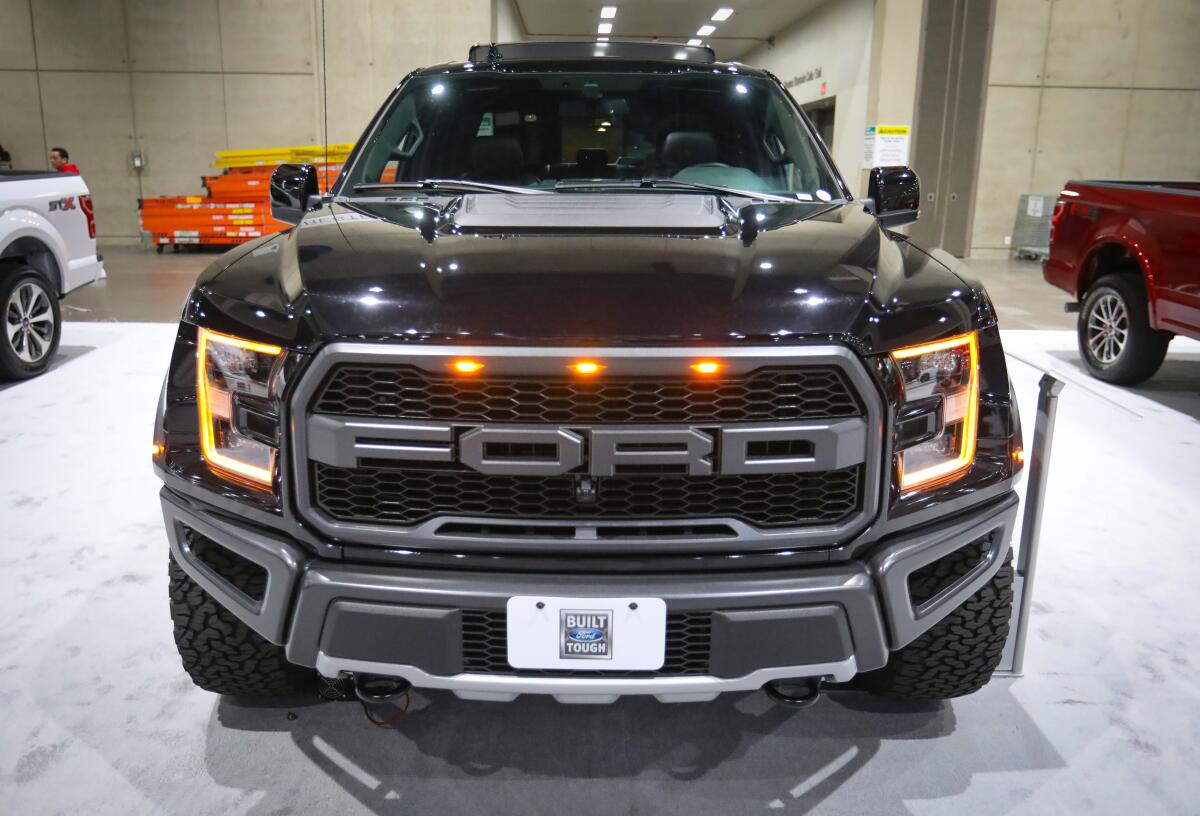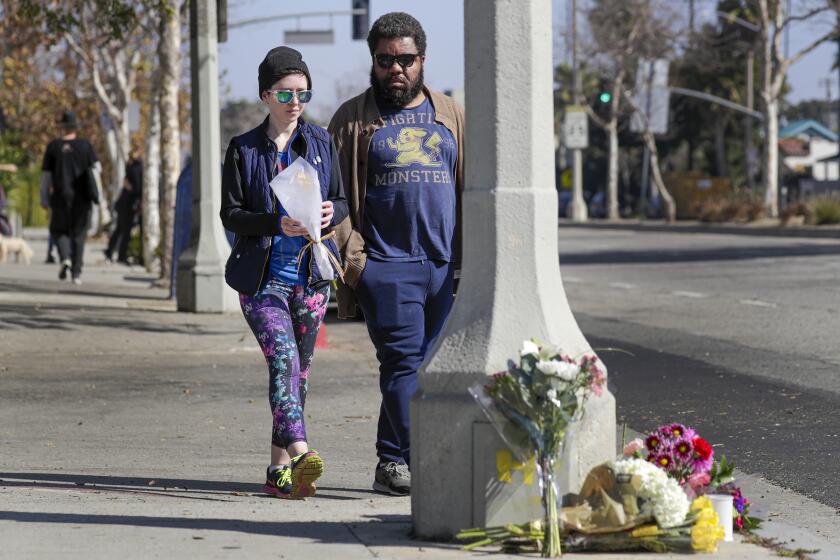Editorial: Hulking SUVs and trucks are deadly to pedestrians. Why aren’t regulators pushing for safer models?

- Share via
American car buyers’ love of big SUVs and trucks is one reason pedestrian deaths have hit a 40-year high.
The heavier, taller vehicles now make up 80% of car sales in the U.S., and a growing body of research shows they are more deadly when drivers hit pedestrians and cyclists. The mass of SUVs and trucks means they take longer to stop and strike with more force.
They also have larger blind spots than smaller cars. With reduced visibility, drivers turning at an intersection are more likely to hit pedestrians, according to one study. Drivers are also less likely to see small children directly in front of the vehicle. With a higher profile, when a SUV or truck crashes into a person, the front hits the chest and head for more traumatic injuries.
The entire transportation system, from road engineering to vehicle design, needs to be planned to avoid crashes and to reduce serious injury and death when crashes occur.
And it’s not just the gas guzzlers that are the problem. The head of the National Transportation Safety Board, Jennifer Homendy, warned earlier this year that heavier, more powerful electric vehicles could increase the risk of serious injury and death from vehicle collisions.
Because of the large battery packs needed to power zero-emission SUVs and trucks, electric vehicle models weigh significantly more than their combustion engine versions. Ford’s F-150 Lightning EV pickup is 2,000 to 3,000 pounds heavier than the gas-powered model, she said. The electric GMC Hummer — which President Biden posted a picture of himself driving — weighs roughly 9,000 pounds. Its battery pack alone weighs 2,900 pounds, which is about the same weight as a typical Honda Civic.
Yet, despite the research and rising number of pedestrian deaths, the federal government has done little to address the risk of having so many bigger, heavier vehicles on the road. (Homedy’s agency investigates crashes but doesn’t set standards for vehicle design. That’s the job of the National Highway Traffic Safety Administration.)
Speed, reckless driving and inattention are to blame. So is the infrastructure in L.A., where the streets are dangerous by design.
In the absence of federal action, California lawmakers are considering a proposal that could eventually charge car owners a fee for registering heavier vehicles. Assemblymember Chris Ward (D-San Diego) has introduced Assembly Bill 251 to create a task force to study the costs and benefits of a vehicle weight fee. The California Transportation Commission requested the legislation last year, recognizing the connection between increasingly heavy vehicles and pedestrian deaths.
This shouldn’t be a controversial bill. The task force is an incremental but critical first step — one that is already overdue — toward addressing the serious danger posed by ever larger vehicles on the roads.
California already charges a weight fee on commercial vehicles. This would be the first such fee for passenger vehicles in the state. Several other states, including New York, Florida and Virginia, currently base registration fees on vehicle weight.
Last year, Washington D.C., hiked registration fees for heavier vehicles; owners of SUVS, minivans and trucks weighing more than 6,000 pounds will have to pay $500 per year, up from $155. The idea is to charge motorists a lot more because their cars have an outsize impact — not only are mega-vehicles more dangerous to pedestrians and cyclists, they’re also harder on the roads and bad for the environment. The money is supposed to be used for street safety around schools. The D.C. law does let electric vehicle owners subtract 1,000 pounds from the total weight, so as not to discourage residents from switching to zero-emission models.
As EV technology improves, the battery packs are expected to become smaller. But that advancement will be of little help if automakers and consumers continue to buy vehicles with little regard to their danger to people in front of the windshield. Federal regulators should push automakers to design vehicles that are safer not just for the driver but for the pedestrians and bicyclists. Until that happens, California lawmakers can pass AB 251 to help create momentum for change.
More to Read
A cure for the common opinion
Get thought-provoking perspectives with our weekly newsletter.
You may occasionally receive promotional content from the Los Angeles Times.












